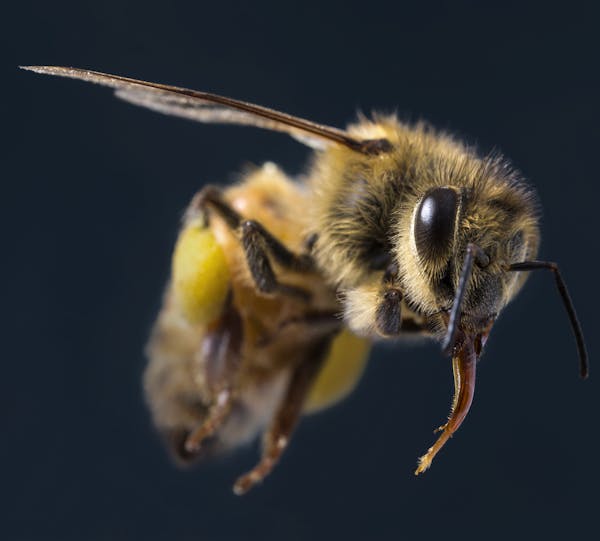The nation's beekeepers won a round.
In an unusual decision with wide implications for bees and other pollinators, a federal appeals court Thursday revoked federal approval of a controversial insecticide because government regulators relied on flawed and limited information about its impact on honeybees.
"I'm smiling and crying all at the same time," said Jeff Anderson, a Minnesota beekeeper who was among the plaintiffs in the suit and who has been on the front lines in the ongoing legal fight against the class of insecticides called neonicotinoids.
The court said the U.S. Environmental Protection Agency (EPA) gave unconditional approval of the insecticide sulfoxaflor in 2013, even though it was clearly toxic to honeybees, and the manufacturer failed to conduct required tests of its impact on not just adult bees, but also brood and colony strength.
The EPA violated its own rules and procedures, the Ninth Circuit Court of Appeals decision said. And in an unusual move, it took the added step of overturning the EPA's approval because "given the precariousness of the bee populations," leaving the insecticide on the market would create greater environmental risks than pulling it.
"This is a huge opinion," said Peter Jenkins, an attorney for the Center for Food Safety, which has also sued the EPA over its regulation of neonicotinoids. "There was not enough data that the EPA could point to support its conclusions."
The ruling was also significant because it supports the view of many beekeepers and environmental groups that the EPA should consider the long-term, colony-wide impact of insecticides, not just instantaneously lethal doses on single adult bees.
"It clearly holds that the EPA needs to have information about the impact an insecticide can have on a honeybee colony," said Greg Loarie, the lead attorney for Earthjustice, the environmental group that, along with national beekeeper groups, filed suit against the EPA.
Dow AgroSciences, which manufactures sulfoxaflor, said in a statement that it disagrees with the Ninth Circuit's decision.
It may challenge the ruling, the company said, but in the meantime will work with the EPA to complete the required studies. Company officials declined to answer further questions.
The ruling flowed from one of several lawsuits pending against the class of insecticides called neonicotinoids that have been implicated in the decline of honeybees in Europe and the United States.
According to an annual survey by the U.S. Department of Agriculture, the number of managed honeybee colonies declined 42.1 percent from April 2014 to April 2015, compared with a drop of 34.2 percent last year, and the second-highest annual loss to date.
The losses have been especially acute in Minnesota and other Upper Midwest states, the largest honey producing area of the country.
Honeybees are crucial because they pollinate roughly a third of the food in the nation's grocery aisles, a service valued at $3 billion.
The White House has recently released a plan to protect pollinators, and the EPA is conducting a review of neonicotinoids that won't be completed for several years.
Scientists cite many reasons for the plight of bees, including difficult-to-control parasites and diseases and an increasingly flowerless landscape dominated by row-crop agriculture.
But a growing body of research shows that neonicotinoids, the world's most widely used class of insecticides, may play a role in the decline of honeybees and other wild pollinators. They can be used as sprays, granular applications or as seed coatings that grow along with the plant, making it poisonous to pests as well as all other insects, including bees and butterflies.
The manufacturers and the EPA say that if used properly, the insecticides are not lethal to honeybees.
But many scientists and beekeepers say that the lower doses in the field can cause neural damage to the insects and interfere with their complex navigational abilities and reproduction.
Earthjustice and the beekeeper groups sued the EPA when the substance was approved, meaning that it immediately jumped to the federal appeals court level. The three-judge panel in San Francisco reviewed the regulatory history and the research that Dow provided.
Initially, the EPA gave conditional approval to the chemical, meaning that Dow would need to provide more research on its effect on bees. But within months, the EPA gave sulfoxaflor final approval even without the required studies.
"Without sufficient data, the EPA has no real idea whether sulfoxaflor will cause unreasonable adverse effects on bees," the judges said.
Josephine Marcotty • 612-673-7394
The Latest | Trump's legal team again asks appeals court to intervene in hush money case

